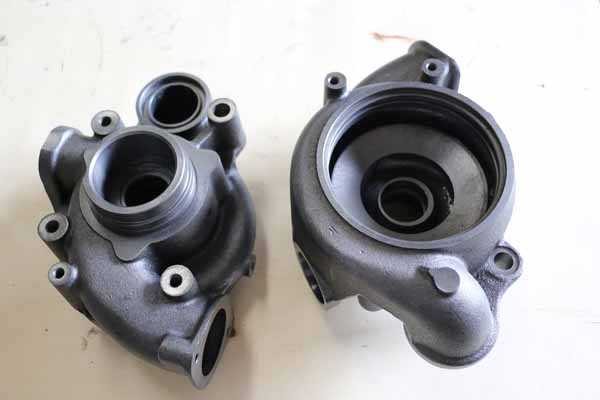**Rolling Bearing Combination Layout: A Detailed Overview**
Home > Bearing Knowledge > Combination Layout of Rolling Bearings
Source: China Bearing Network | Time: 2014-07-02
---
Rolling bearings are essential components in mechanical systems, and their proper combination layout is crucial for performance, longevity, and reliability. The layout involves the positioning, fixing, and cooperation of bearings with shafts or bearing housings, ensuring smooth operation under various conditions.
### 1. Support End Layout Methods
The support end layout ensures that the rolling bearing shaft system can transmit axial forces without swaying. It relies on the fixed positioning of parts on the shaft and requires careful axial fixation of the bearing fulcrum. There are three common methods:
**(1) Two Ends Fixed (One-Way Fixing)**
This method is suitable for short shafts (L < 400 mm) at normal working temperatures. Each bearing is fixed in one direction to handle axial forces. A small axial clearance (0.25–0.4 mm) should be left to accommodate thermal expansion. This setup is ideal for applications where minimal movement is expected.
**(2) One End Fixed, One End Floating**
When the shaft is long or the operating temperature is high, this layout is preferred. The fixed end supports bidirectional axial loads using a single bearing or bearing set, while the floating end allows free movement to accommodate thermal expansion. The inner ring of the floating bearing must be axially fixed (e.g., with a circlip), and the outer ring should be secured to the housing. Cylindrical roller bearings are often used for floating ends due to their ability to allow axial movement.
**(3) Two Ends Floating (Two-Way Floating)**
This method is used in high-speed applications, such as herringbone gear transmissions, where axial movement is necessary to compensate for helix angle errors. Cylindrical roller bearings are typically used at both ends, and the low-speed gear shaft system is fixed at both ends to ensure proper alignment.
### 2. Positioning and Axial Fixation
Bearings are usually positioned on the shaft using shoulders or sleeves. The shoulder radius (r1) should be smaller than the bearing's inner radius (r) to ensure proper seating. The height of the shoulder should not exceed 3/4 of the inner ring height to avoid difficulties during disassembly.
Axial fixation of the inner ring depends on the size of the axial load. Common methods include shaft-end retaining rings, locknuts, and elastic retainers. For the outer ring, fixation can be achieved through the housing face, circlips, pressure plates, or end covers.
### 3. Shaft and Housing Cooperation
Proper cooperation between the bearing and the shaft or housing is critical to prevent slippage, which can lead to wear, heat, and early failure. The fit must be tight enough to prevent relative motion but not so tight that it causes damage during installation or removal.
The type of cooperation depends on factors like load, speed, and temperature. Tighter fits are recommended for heavy loads, high speeds, and high temperatures, while looser fits are suitable for frequent disassembly or movement.
### 4. Rigidity and Coaxiality
The
Bearing Housing must have sufficient rigidity to prevent deformation that could affect the rolling elements. The wall thickness of the housing should be adequate, and the cantilever length should be minimized to reduce stress.
Ensuring coaxiality between the two bearing holes is important to avoid misalignment of the inner and outer rings. Using the same bearing dimensions and boring them together can help reduce coaxiality errors. If different-sized bearings are used, a sleeve layout may be necessary.
### 5. Lubrication and Sealing
Lubrication is essential for reducing friction, wear, and heat. Rolling bearings can be lubricated with oil, grease, or solid lubricants. The choice depends on the operating conditions, such as speed (dn value), load, and temperature.
Grease is commonly used for low-speed and moderate-temperature applications, while oil is preferred for high-speed or high-load scenarios. Sealing is also vital to prevent contamination and leakage. Seals can be either contact or non-contact types, with non-contact seals being more suitable for high-speed environments.
---
**Related Articles**
- Key considerations when designing a rolling bearing combination
- SKF: Pre-lubricated sealed linear ball bearings
- Current status and future trends in oil-impregnated bearing powders
**Share this article:**
[Recommend to Friends] | [Comments] | [Close Window]
---
For more information on bearings and their applications, visit **China Bearing Network**.
Link: http://www.chinabearing.net
Please cite the source: China Bearing Network.
Water Pump Housing
Water pumps serve in a wide range of
applications such as pumping water
from wells, aquarium filtering, pond
filtering and aeration, in the car industry for water-cooling and fuel injection, in the energy industry for pumping oil and natural gas or for
operating cooling towers.
The water pump housings we supplied are
one of the key parts in the pump assembly.
We manufacture & sell more than 15,000
sets /year to all over the world.
We also supply fine machined Pump Accessories according to your requirement.

QFAP has specialize in producing pump
housings more than 5years.
Materials: Ductile iron, Grey
iron, Aluminum
Surface treatment: Painting,
Powder coating, only oiled
Main of our customers is from
German, USA, and CAN.
With the long terms of experience in the
pump industry, we could supply the pump housings or help to design the housings
according to your requirements.
Water Pump Housing,Water Pump Housing Leak,Water Pump Housing Gasket,Water Pump Housing Unit
SHAOXING QIFENG AUTO PARTS CO., LTD. , https://www.sxqfap.com
